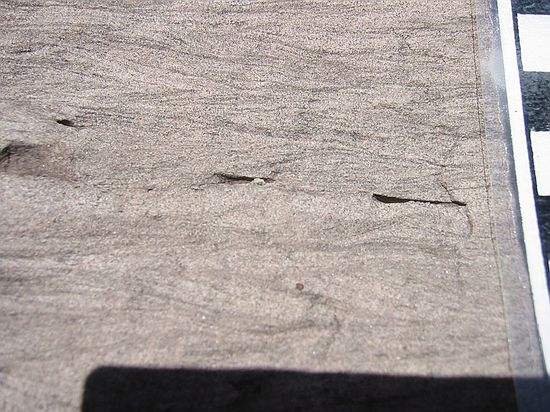| Paleocurrents.com | Back to: Field School, Sedimentology & Stratigraphy, Intro to Geology, Fossils, Lab Methods |

Prev | Index For This Date | Next

Prev | Index For This Date | Next
Morrison formation: cross-laminations in channel complex (clays & muds). Overall, the Morrison formation consists of clays, siltstones, and carbonates (e.g. gypsum) which accumulated in a warm, moist lowland environment. Sluggish rivers were responsible for the deposit of mud and silt, which hardened into shale and siltstone respectively. Gypsum forms from the evaporation of a warm shallow sea.
Hosting donated by Wagner Database Solutions, Inc. |